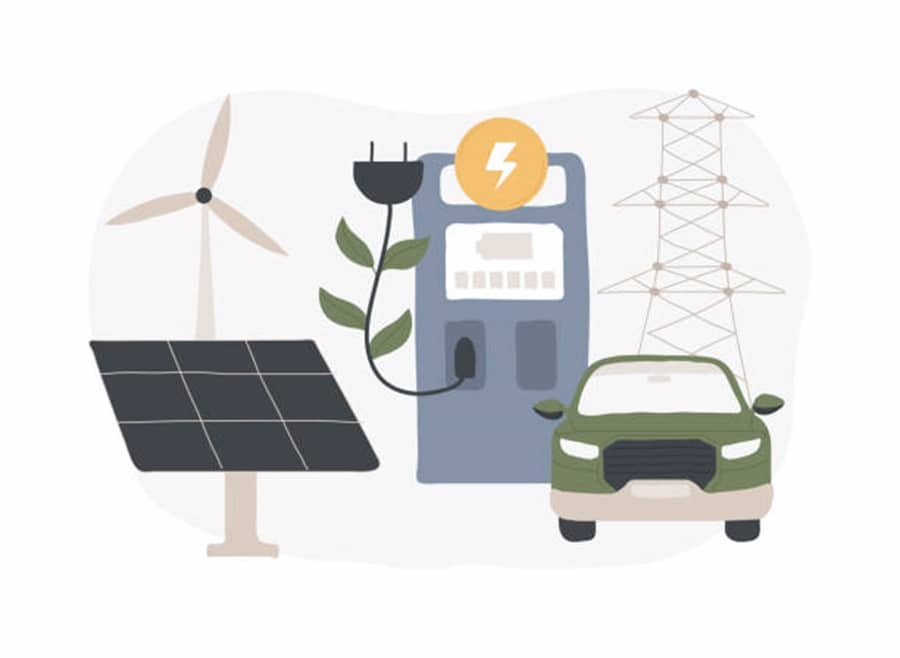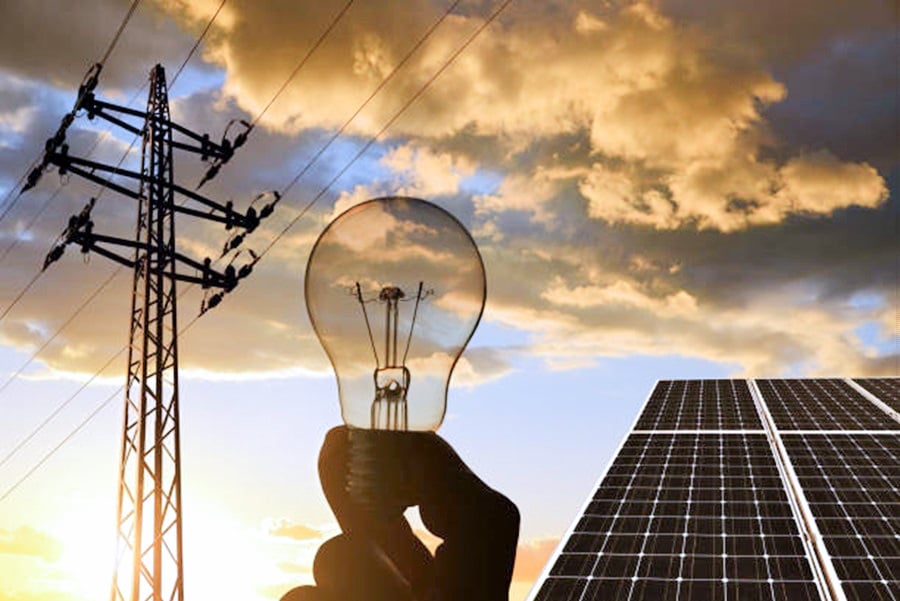Australia, the sunburnt country, boasts some of the highest solar radiation levels globally. This makes it a prime candidate for harnessing solar energy, and homeowners embrace this clean power source with gusto. However, with this surge in solar panel installations, questions arise about their impact on the electricity grid. Let’s delve into the two sides of the coin: the benefits and challenges of solar panels for your grid connection.
How grid-connected solar works
Grid-connected solar systems allow homes and businesses to generate electricity while remaining connected to the mains grid. Here’s how it works:
Solar panels: The heart of the system lies in the solar panels installed on rooftops. These panels are interconnected solar cells that convert sunlight into direct current (DC) electricity. Read more about Best Solar Panels In Australia: Brands To Consider.
Inverter: A grid-interactive inverter converts the DC electricity from the solar panels into alternating current (AC) compatible with household appliances. It connects to the household’s switchboard and electricity meter. Read more about Best Solar Inverters | Reliable And Intuitive Inverters.
Grid interaction: When your solar panels produce more electricity than your home needs, the excess power flows into the mains grid. Conversely, your home draws electricity from the grid during cloudy days or nighttime. This bidirectional flow ensures reliability and flexibility.
Feed-in tariff: As you feed excess energy into the grid, you receive a feed-in tariff—a payment for contributing to the grid’s stability. The rate varies depending on your energy retailer and location. Read more about Australian Solar Feed-in Tariffs Information.
Find out how much you can expect to pay for solar
Ready to find out more? Get FREE quotes for solar, batteries + more
*Prices quoted are to be used as a guide only and do not factor in state and other rebates and incentives. Includes STC discount.
Grid connection process
Approval: Before installing solar panels, seek approval for the grid connection from your Distribution Network Service Provider (DNSP). The DNSP manages your system’s physical connection to the grid. Each DNSP has its own process, so consult their guidelines.
Pre-approval: Some areas require pre-approval to ensure seamless grid connection. Your solar retailer can guide you through this step. Not everyone can export excess energy, so clarify this with your distributor.
System size: Grid connection is straightforward for small systems (up to 5kW). Your distributor will specify an “export limit,” dictating how much solar generation you can feed into the grid. Larger systems may involve negotiation.
Impact on the grid
Power quality: Solar panels introduce bidirectional power flow, affecting grid quality. Fluctuations due to varying sunlight can impact voltage stability, which grid operators must manage to maintain reliability.
Traffic jams: Surplus solar generation can cause “traffic jams” in the grid. As more households adopt solar, managing this influx becomes critical. The Australian Energy Market Commission (AEMC) is exploring solutions, including potential charges for exporting solar energy.
Benefits of solar panels for the grid
Solar panels offer a multitude of advantages for the grid:
- Reduced reliance on fossil fuels: Solar energy is a clean and renewable resource, displacing dependence on traditional power sources like coal and gas. This translates to a cleaner grid, reduced greenhouse gas emissions, and progress towards a sustainable energy future.
- Peak demand shaving: Australia’s peak electricity demand typically occurs during sunny afternoons, coinciding with peak solar power generation. This reduces the strain on traditional power plants, leading to lower wholesale electricity prices and potentially lower retail prices for consumers.
- Distributed generation: Solar panels are decentralised energy sources, generating power closer to where it’s consumed. This reduces transmission losses and improves grid resilience, especially in remote areas where extending traditional power lines is expensive.
- Increased grid capacity: Widespread solar adoption can incentivise investment in grid modernisation. Upgrading infrastructure to handle two-way power flow (from homes to the grid) can strengthen the grid’s capacity.
Challenges on the horizon: Balancing the grid with solar
While solar offers significant benefits, there are also challenges to consider:
- Variable power output: Solar panels rely on sunshine, so their output fluctuates throughout the day and seasons. This variability can create challenges in maintaining grid stability, which traditionally relies on predictable power sources.
- Reverse power flow: As more homes feed power back into the grid during peak solar production times, voltage levels can rise in local grids. This can necessitate grid upgrades or curtailment of solar exports.
- Storage limitations: Currently, large-scale energy storage solutions are limited. With sufficient storage, excess solar energy during the day can be readily utilised at night when production drops.
Finding the equilibrium: Solutions for a solar-powered future
Despite the challenges, Australia is actively working towards a future powered by renewables, including solar. Here are some solutions that are being implemented:
Grid modernisation: Upgrading infrastructure to be more flexible and accommodate two-way power flow is crucial. This includes smart grids with advanced monitoring and control systems.
Demand-side management: Encouraging consumers to shift energy usage to times when solar production is high (e.g., running appliances during the day) can help balance grid demand.
Feed-in tariffs: These schemes provide financial incentives for homeowners to export excess solar energy back to the grid. However, these tariffs may need adjustments to reflect the challenges of reverse power flow.
Energy storage: Investing in large-scale battery storage solutions will allow excess solar energy to be saved and used when needed. This will smooth out solar power’s variability and ensure grid stability.

Challenges and considerations
Export limits: Understanding your export limit ensures optimal system sizing. Oversized systems may face restrictions, affecting returns on investment.
Regulatory changes: Keep abreast of evolving regulations. The AEMC’s recommendations may impact feed-in tariffs and grid access fees.
Battery storage: While grid-connected systems don’t require batteries, adding storage can enhance self-consumption and grid stability during outages.
Use our easy-to-use solar power and battery storage calculator to determine the size of your solar system with storage! Our solar calculator will generate performance information and potential savings.
We can send this information to 3 of our pre-vetted and trusted local installers in your area to receive obligation-free solar quotes.
Grid-connected solar panels empower Australians to contribute to a cleaner energy future. As the grid adapts to accommodate solar influx, informed decisions and collaboration between consumers, regulators, and energy providers are essential. So, whether you’re a homeowner or a business owner, harness the sun’s power responsibly and be part of the renewable revolution.
Remember, every kilowatt-hour your solar panels generate is a step toward a greener Australia.
Conclusion: A brighter future with solar power
The rise of solar panels in Australia presents opportunities and challenges for the electricity grid. While there are hurdles to overcome, the benefits of solar are undeniable. By implementing solutions like grid modernisation and energy storage, Australia can ensure a future where solar power thrives alongside a stable and reliable electricity grid. Understanding solar’s impact on grid connection will allow homeowners to make informed decisions and contribute to a cleaner energy future.
As solar technology continues to evolve and storage solutions become more cost-effective, solar integration into the grid will become smoother. Ultimately, a collaborative effort between the government, energy providers, and individual consumers is necessary to unlock the full potential of solar power for a sustainable energy future in Australia.
Energy Matters will feature stunning homes installed with the latest solar technology every Saturday at 3.30 pm on Renovate or Rebuild on Channel 9. Be sure to watch this show; you don’t want to miss it!















































